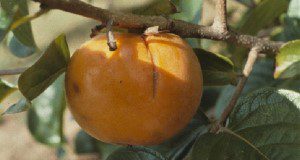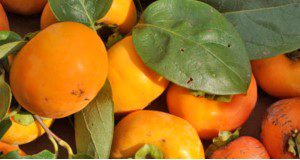Persimmons are considered a relatively sustainable crop in Florida, rated as a 6 out of 10 on an assessment of agricultural sustainability, with a moderate commercial potential and high direct-to-consumer potential. Trees grow and fruit best in central and northern Florida and can produce high yields of good-quality fruit. This new 13-page publication of the UF/IFAS Horticultural Sciences Department describes how to propagate and establish persimmons in Florida, while also providing information on irrigation, fertilization, harvest, pests, diseases, and more. Written by Ali Sarkhosh, Dustin M. Huff, and Peter C. Andersen.
https://edis.ifas.ufl.edu/hs1389
Tag: Japanese persimmon
Japanese Persimmon Varieties in Florida
Japanese persimmons were first grown in Florida in the 1870s, but as of 2017, most US plantings are on a small scale; however, even as the overall acreage has decreased, the number of farms in Florida growing the fruit increased from 2012 to 2017. Trees grow and fruit best in central and northern Florida and can produce high yields of good-quality fruit. With an estimated population of more than 21 million, a diverse cultural base, and large cities close to production zones, Florida is primed for a larger persimmon industry. This 11-page revision provides growers with a primer on persimmon characteristics, marketing, and cultivars. Written by Ali Sarkhosh, Peter C. Andersen, and Dustin M. Huff, and published by the UF/IFAS Horticultural Sciences Department.
https://edis.ifas.ufl.edu/mg242

